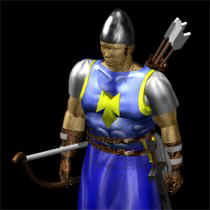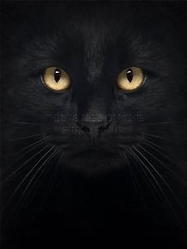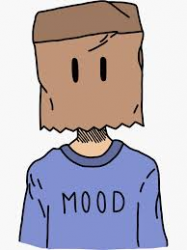9




















| Thumbs Up |
| Received: 35,751 Given: 17,041 |

Maps of Britain and Ireland’s ancient tribes, kingdoms and DNA
Source: http://www.abroadintheyard.com/maps-...-kingdoms-dna/
For map fans, some new maps showing Celt, Roman, Anglo-Saxon and Viking territories in the British Isles. Also, the remarkable DNA map which shows how modern Britons still live in the same tribal kingdom areas as their ancestors in 600 AD.
The old counties of Britain & Ireland formed as medieval structures of government, but the origins of many of their names and borders lie even deeper in antiquity.
Usually the names and borders of counties relate to ancient kingdoms or tribal territories. Although territorial borders have ebbed and flowed over centuries of shifting power many have remained constant, defined by natural features such as rivers and hills. Archaeology has found many examples of continuous territorial borders where, for instance, Roman villa estate boundaries were identical to those of medieval estates a thousand years later.
The earliest recordings of the inhabitants of the British Isles were made by Roman and Greek geographers, especially Ptolemy in the 2nd century AD. The ethnic names they gave to these Iron Age Celtic tribes may not be the names by which they knew themselves. Some, though, shared common names with tribes elsewhere in the British Isles and in Europe.
Britain was first divided into large administrative areas following Roman conquest from 43 AD. Petty kingdoms took their place after the fall of Roman Britain in the 5th century AD and formed along old tribal lines, as well as new divisions of land created by Anglo-Saxon and Viking settlers.
Many of the areas that would later form the historic counties of the British Isles had already taken shape by the time of the Norman conquest of England in 1066.
The maps below use historic county borders to map the supposed territories of the Celts, Romans, Anglo-Saxons and Vikings in the British Isles.
DNA evidence suggests that these borders are more than mere conjecture. Scientists from Oxford University recently studied the genetic make up of modern Britons and were amazed to find that they still live in the same broad tribal groupings as their ancestors almost 1,500 years ago.
As you will see, the map showing the British Isles c. 600 AD, after the fall of the Roman Empire and the start of the Anglo-Saxon invasion, is almost identical to their map plotting 17 distinct genetic groups found in British DNA.
The study analysed the DNA of over 2,000 people from rural areas of the UK, whose four grandparents were all born within 50 miles of each other. This provided the researchers with a snapshot of UK genetics in the late 19th Century before mass migration events. (It is a pity the study did not extend to the modern population of the Republic of Ireland as their genetic links to the rest of the British Isles would be fascinating to see).
What it shows about the UK population is that many local communities have stayed put for almost 1,500 years – many for far longer – and that their strong sense of regional identity with their birthplace is deep in their DNA.
This is most strikingly seen in the genetic split between people living in modern Cornwall and Devon where the division lies exactly along the county border along the River Tamar; the people living on either side of the river have different DNA.
The largest genetic groupings, particularly in southern and central England, coincide with the territories of invading Angles, Saxons and Jutes from Denmark.
Smaller genetic groups in Wales and the north of England tally with the strongholds of the ancient Britons, such as the kingdom of Elmet in what is now West Yorkshire.
The study’s other remarkable findings included:
– There are more genetic differences between North and South Wales than between Kent and Scotland.
– There is more similarity between people in the North of England and Scotland than people in the south of England.
– There is no single ‘Celtic’ genetic group. The Celtic parts of the UK (Scotland, Northern Ireland, Wales and Cornwall) are among the most different from each other genetically.
– Anglo-Saxon invaders tended to intermarry with, rather than replace the existing population.
– There is no large genetic signature from the Vikings even though they controlled large parts of the British Isles.
– Only Orkney residents were found to have significant levels of Viking DNA; a quarter of their DNA coming from Norway, suggesting that the Norse Viking invasion of the 9th century added to rather than replaced the characteristics of the indigenous settlers.
– There is also little Roman DNA in the British genetic make-up.

















| Thumbs Up |
| Received: 37,279 Given: 39,691 |

who here /catuvellauni/?
A lot of mention in primary school in western Herts about our forebears and the Iceni invasion.
Who is rich? He who is happy with what he has - Simeon ben Zoma, Ethics of the Fathers, Talmud, Avot 4:1
I live here. I also live here.
Europeans worldwide * Longbowman's family on 23andme * Classify Longbowman * Ask Longbowman anything



| Thumbs Up |
| Received: 485 Given: 1,104 |

Anglo-Saxons are very close to Iron age Celts
Iron Age Kelt R1b
K12b
39.04% North_European
32.43% Atlantic_Med
9.12% Caucasus
5.96% Gedrosia
3.54% Sub_Saharan
2.90% South_Asian
2.73% East_African
2.63% Northwest_African
1.63% Southwest_Asian
0.02% Siberian
0.00% East_Asian
0.00% Southeast_Asian
Anglo Saxon K12b
49.89% North_European
30.08% Atlantic_Med
9.78% Caucasus
3.63% East_Asian
3.19% Sub_Saharan
1.31% Northwest_African
1.16% Siberian
0.79% East_African
0.08% Gedrosia
0.07% South_Asian
0.00% Southeast_Asian
0.00% Southwest_Asian















| Thumbs Up |
| Received: 20,927 Given: 18,997 |

Yes but it is still possible to distinguish ancestry from these groups, using RARECOAL method.
And with use of this method it was established that English people are 2/3 Celtic 1/3 Germanic.
===================
Here are links to all of the relevant studies:
1) Studies with ancient DNA:
http://biorxiv.org/content/early/2015/07/17/022723
PDF: http://biorxiv.org/content/biorxiv/early/2...022723.full.pdf
http://www.nature.com/articles/ncomms10326
PDF: http://www.readcube.com/articles/10.1038/ncomms10326
This map shows proportion of Celtic ancestry quite well (the darker shade = the more Celtic):
2) Studies on modern population:
http://www.nature.com/nature/journal/v519/...ature14230.html
PDF: http://www.nature.com.sci-hub.cc/nature/jo...ature14230.html
3) How phenotypes changed:
http://biorxiv.org/content/early/2016/05/07/052084
PDF: http://biorxiv.org/content/biorxiv/early/2...052084.full.pdf
http://biorxiv.org/content/early/2016/05/27/055855
PDF: http://biorxiv.org/content/biorxiv/early/2...055855.full.pdf
=================
There is also some "extra" Southern European ancestry in modern English people.
Compared to Iron Age Celts and Dark Age Anglo-Saxons, modern English are more genetically Southern:
http://biorxiv.org/content/biorxiv/e...55855.full.pdf
Quote from the study linked above:
This is visible also when we compare ancient & modern samples e.g. in Eurogenes K15 calculator:"(...) We consistently obtained significantly positive statistics, implying that both the modern Celtic samples and the ancient Saxon samples have more Steppe ancestry than the modern English samples from southern and eastern England. This indicates that southern and eastern England is not exclusively a genetic mix of Celts and Saxons. There are a variety of possible explanations (...)"
1) Iron Age Briton from Hinxton = 38% "North Sea", 30% "Atlantic" and 6.5% "Mediterranean"
2) Anglo-Saxon immigrant (Hinxton) = 41.5% "North Sea", 28.5% "Atlantic", 6.5% "Mediterranean"
3) Modern English (from Kent) average = 35.5% "North Sea", 30% "Atlantic", 11.5% "Mediterranean"
As you can see modern English have almost two times more of "Mediterranean" admixture.
One of possible explanations is Roman ancestry (Iron Age Celts before the Roman conquest did not have it and Anglo-Saxon immigrants did not have it - but they acquired it after mixing with local Romano-Britons).
==================
Celts were most similar to modern Irish, and Anglo-Saxon immigrants to modern Swedes.
At least this is what I get when I use GEDmatch calculators to check admixtures of these samples:
Please also note, that the genetic distance between Celtic Briton and modern English = 3.05; while the genetic distance between Anglo-Saxon immigrant and modern English = 7.24, or two times more - which is in agreement with conclusions from 2015-2016 studies, that modern English are 2/3 Celtic and 1/3 Germanic:
It is possible to distinguish Celtic from Anglo-Saxon ancestry using RARECOAL method. This method is about comparing frequencies of rare alleles, which allows to distinguish even similar populations:When using puntDNAL K15 calculator:
Pre-Roman Celtic Briton. Kit F999925. Single Population Sharing:
# Population (source) Distance
1 Irish 2.38
2 North_German 2.95
3 Orcadian 3.03
4 English 3.05
5 Scottish 3.18
6 Norwegian 4.4
7 Slovenian 4.44
8 Austrian 4.91
====================
Anglo-Saxon immigrant. Kit F999921. Single Population Sharing:
# Population (source) Distance
1 Swedish 4.3
2 Norwegian 4.41
3 Scottish 5.73
4 North_German 5.87
5 Polish 6.44
6 Orcadian 6.82
7 English 7.24
8 Irish 7.93
https://github.com/stschiff/rarecoal/
http://www.anthrogenica.com/showthre...l=1#post195768This software implements tools to process and analyse genome sequencing data. The key program is called rarecoal, other programs in this package help with the data processing necessary to use rarecoal. A preprint on a project using this software can be found here (link), and the mathematical derivations can be found under doc/rarecoal.pdf.
Given that all northern Europeans have a lot in common genetically, it is a question of picking up more subtle differences

















| Thumbs Up |
| Received: 5,782 Given: 5,353 |

My Irish family migrated from Galway and Monaghan and I have I1a DNA which 90% of males in Norway and Sweden have.



Only butthurted clowns minuses my posts. -- Лиссиы














| Thumbs Up |
| Received: 8,490 Given: 10,741 |

I was always curious about the far north tribe called
Smertae. It is so very slavic or even polish name!















| Thumbs Up |
| Received: 20,927 Given: 18,997 |















| Thumbs Up |
| Received: 8,490 Given: 10,741 |


















| Thumbs Up |
| Received: 6,944 Given: 7,469 |

The Roman conquest happened in 43 AD, centuries before the Anglo-Saxon invasion of Britain. Were you perhaps referring to the Norman conquest of Britain? If so, its interesting that they made the English significantly more woggier when they are the northern most people of France and said to have a bit of Scandinavian ancestry.
There are currently 1 users browsing this thread. (0 members and 1 guests)
 Éire
Éire
Bookmarks